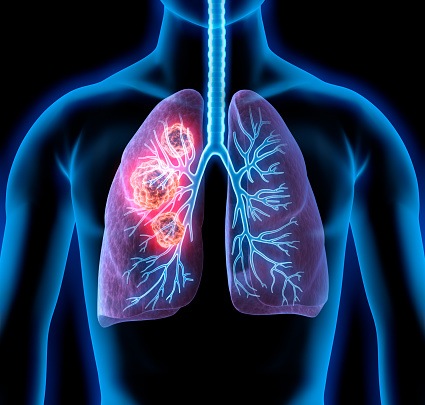
Adoptive cell therapy in combination with checkpoint inhibitors may be promising new treatment for patients with non-small cell lung cancer (NSCLC), according to a new study.
Researchers from the Lung Cancer Center of Excellence at Moffit Cancer Center conducted a phase 1 clinical trial evaluating tumor infiltrating lymphocyte (TIL) therapy plus the checkpoint inhibitor nivolumab for NSCLC. Their findings were published in Nature Medicine.
Optimizing Checkpoint Inhibitors in Lung Cancer
Checkpoint inhibition is used in cancer treatment to redirect the patient’s own immune system to target and kill cancer cells. There are several PD-1 and PD-L1 inhibitors that have been indicated for treating NSCLC. However, due to variable response rates, alternative therapies are needed.
The investigators from Moffit assessed whether TIL therapy, which has been previously tested to treat melanoma, improves the efficacy of checkpoint inhibitors in this patient population.
Twenty patients were enrolled in this single-arm open-label phase 1 trial. Safety was the primary endpoint, and other endpoints included objective response rate, duration of response, and T cell persistence. The prespecified threshold for safety was a ≤17% rate of severe toxicity.
Adoptive Cell Therapy Elicits Tumor Regression
All patients had one or more tumor samples collected for removal of TIL cells. Then, the autologous TILs were expanded ex vivo with interleukin-2. Sixteen of 20 patients (95%) had their TIL cells successfully expanded and received the TIL infusion following disease progression after initial nivolumab monotherapy. TIL was infused with interleukin-2 following cyclophosphamide and fludarabine lymphodepletion. Cell therapy patients also received nivolumab as maintenance.
Thirteen patients were available for final follow-up. The combination regimen met the prespecified safety criteria ≤17% severe toxicity (95% confidence interval, 3–29). Eleven patients displayed a reduction in tumor burden. The median rate of highest tumor reduction was 35%.
After eighteen months of follow-up, two patients had an ongoing complete response, and two patients had either a partial response or maintained clinical remission.
The researchers then conducted an exploratory analysis of patients’ T cells after TIL infusion. “We found T cells recognizing multiple types of cancer mutations were detected after TIL treatment and were enriched in responding patients,” wrote the authors in their study. “Neoantigen-reactive T cell clonotypes increased and persisted in peripheral blood after treatment.”
“These results really give hope to adding cell therapy to the armamentarium for treatment of lung cancer. The TILs give the immune system a boost by providing more T cells to mount an attack, and the checkpoint inhibitor prevents the tumor from inactivating the T cells that infiltrate the tumor,” said Eric Haura, MD, in a press release. Dr. Haura is the associate center director of Clinical Science at Moffitt.
Conclusions and Next Steps
In summary, the authors wrote: “Cell therapy with autologous TILs is generally safe and clinically active and may constitute a new treatment strategy in metastatic lung cancer.”
“Our data indicate that TIL can mediate effective tumor responses in subtypes that are not sensitive to traditional immune checkpoint targeted therapy. Therefore, we believe TIL may extend the scope and impact of immunotherapy into wider populations,” said Ben Creelan, MD, in a press release. Dr. Creelan is the associate member of Moffit’s Department of Thoracic Oncology.
The researchers also continue to analyze the mechanisms behind complete responses or progression after TIL therapy. Based on the results of this trial, the research team is developing a new study to optimize production of autologous TIL infusion, as well as further testing of this treatment in oncogene-drive lung cancers that progress on targeted therapies.







 © 2025 Mashup Media, LLC, a Formedics Property. All Rights Reserved.
© 2025 Mashup Media, LLC, a Formedics Property. All Rights Reserved.